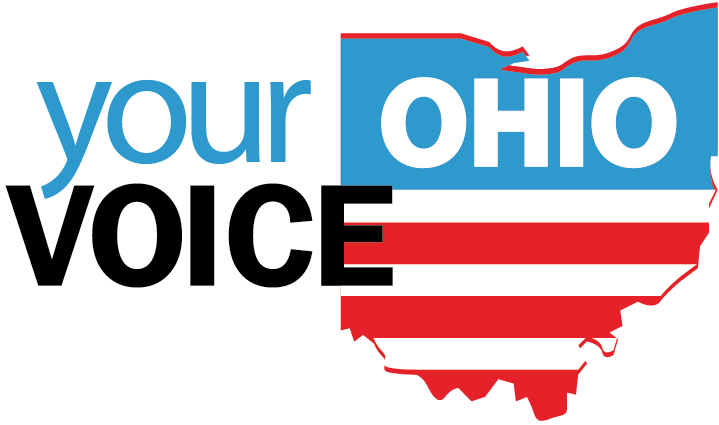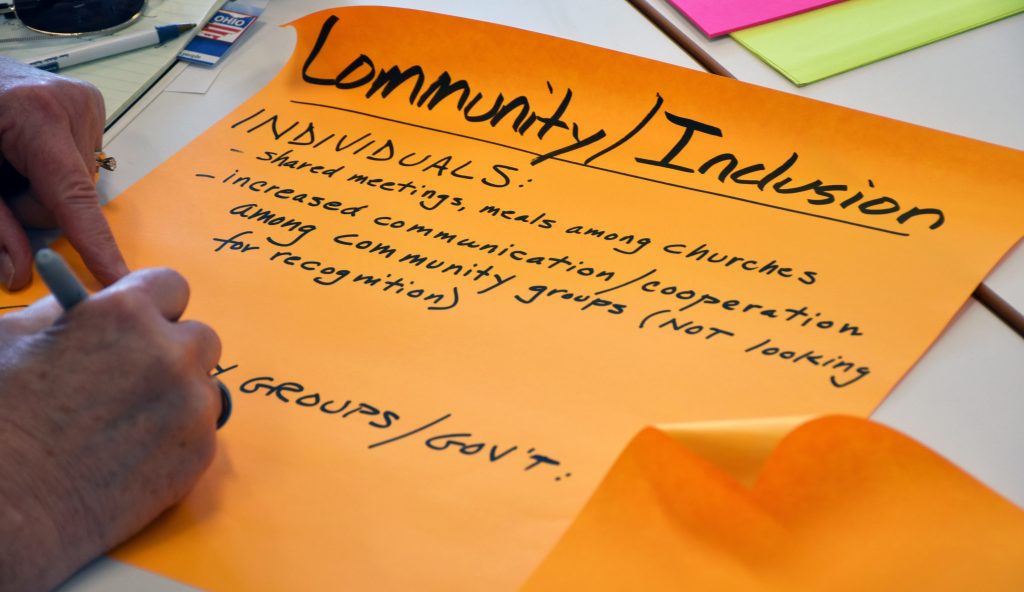Ohio’s gubernatorial candidates – Mike DeWine and Richard Cordray — have plans for improving life in Ohio. How do those plans square with what Ohioans say they need?
The candidates, campaigns and voters steeped in politics may be surprised.
The Your Voice Ohio collaborative of about 50 news organizations set out this summer to explore what Ohioans say their communities need to restore vibrancy, whether that means more jobs, better education, or solutions to the opioid crisis. Almost universally – except for the Columbus metro area – counties across Ohio have experienced precipitous economic decline for two decades – some for 30 or 40 years.
In the sessions, we talked about the economy, but asked participants to think more broadly than that – envision communities that thrive. In other words, what are the elements to making the community a good place to live?
Like our meetings in the past year exploring solutions to the opioid crisis, journalists sat with people in towns and cities to discuss local challenges, local assets and possible steps to making life better.
The turnout, compared with the addiction crisis meetings, was overwhelmingly disappointing. In some cases, fewer than 10 people showed up to discuss an issue that is at the heart of what ails Ohio – the issue Ohioans named as most important in the 2016 election. But then, the opioid crisis is an immediate life-or-death matter. The economy is, well, hard to get your arms around.
But while the attendance was slim in some meetings, the conversations were often lively and, more importantly, there was consistency as we moved from Springfield and Dayton to Lima to Columbus and to five communities in Northeast Ohio.
We asked Ohioans what constitutes a vibrant community if it is thriving for everyone. They said:
- Access to health care
- Access to education
- Diverse local businesses
- It’s clean
- It’s bustling
- There are jobs for all
- There are living wages
- No more poverty
- And no more empty or rundown houses
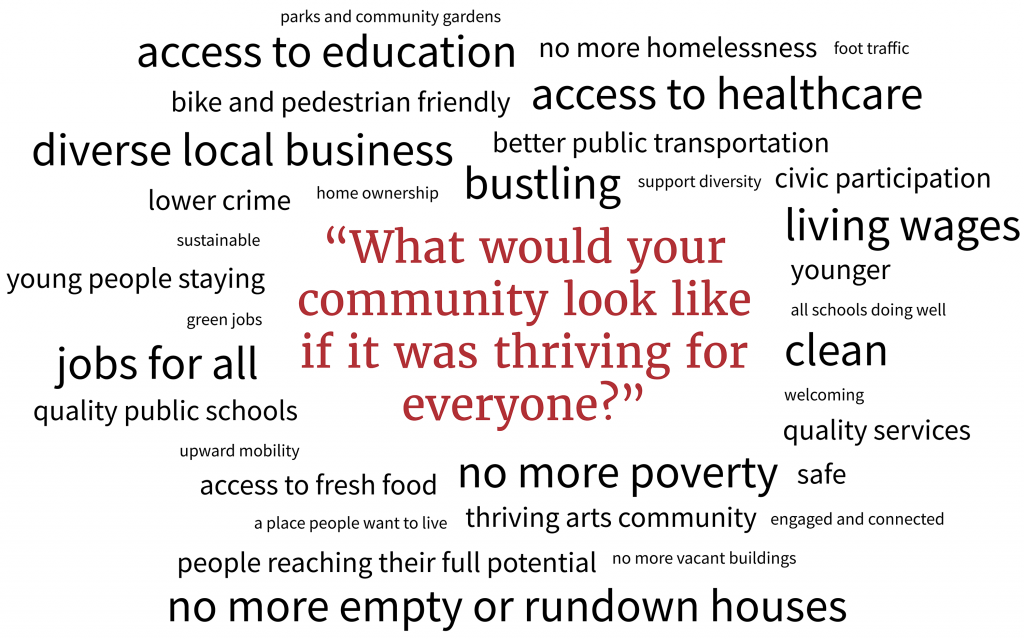
Growing cities, by their very nature, excel at some of those attributes, but not all.
But so do Ohio cities.
For example, as people thought about problems, they were asked to list community strengths, or assets, that could be put to use.
The most common terms we heard were:
- Higher education
- Healthcare industry
- Water
- Labor force
- Location
- Affordability
- Parks
- Arts and culture
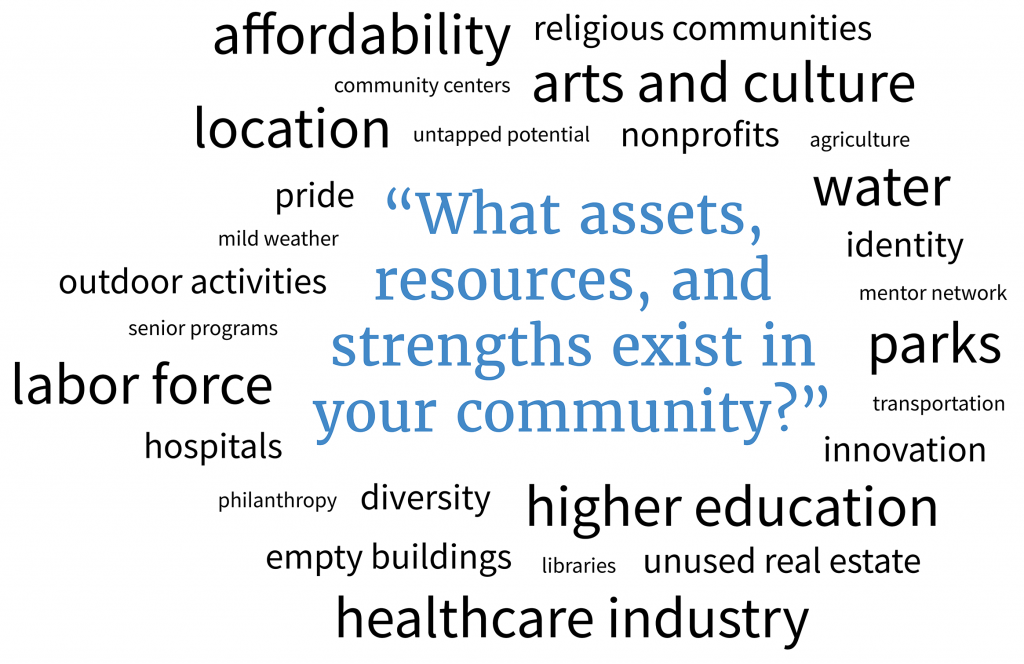
In other words, people believe they have great assets. What’s not to love?
Yet, four of the fastest declining metro areas in the nation include Ohio cities. And even more distressing is that among the fastest growing cities are Boise, Idaho, and Provo, Utah. Look on the map. They are close to how many people?
Dig deeper.
Participants named education and healthcare as both assets and needs.
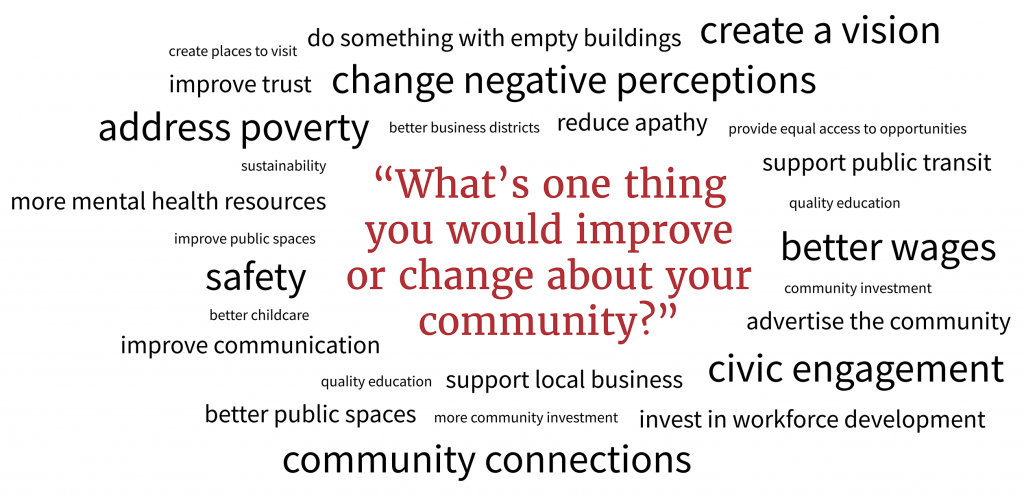
How can they be both? Maybe because Ohio has the services, but doesn’t share?
The U.S. Agency for Healthcare Research and Quality lists Ohio as in the top half for quality health care, but in the bottom quarter for making that health care accessible to everyone. Idaho and Utah, meanwhile may not have the highest rating for quality, but they are in the highest category for making health care available to everyone.
As for education, physical accessibility isn’t a problem for college. Ohio has about 84 public and private four-year universities and two-year colleges. So, with that abundance, why do we rank 37th in the nation for the percentage of people with a four-year degree? Is it cost? Are Ohio children unprepared for college after K-12 education? U.S. News & World Report ranks Ohio at 36th for quality of pre-kindergarten through 12th grade education. Utah and Idaho rank higher on K-12 quality, and Idaho is far higher on college graduates.
The words in those lists came mostly from notes people wrote while thinking quietly. But when discussion began, there was an aha moment regarding one of our strengths: The weather. We don’t have hurricanes, tornadoes or paralyzing blizzards and cold. The lake effect that occasionally whips the northeast counties, well, that builds character. It doesn’t stop progress.
One woman in Warren suggested that weather is a significant attribute and Warren should launch a marketing campaign along the coast: “We are above the water line.”
That’s the beauty of dialog: What we don’t think of ourselves, a group conversation can generate creativity.
As Your Voice Ohio participants said, our communities are within eight hours of half the nation’s population, we have water, workers and low cost of living. Who wouldn’t want to come here?
But there also was an acknowledgment that marketing Ohio cities as a place to move hasn’t worked in the past. Maybe expecting others to come to Ohio and make our lives better is an inadequate solution.
At the close of each session, participants were asked to share a phrase or sentence that they would tell friends after the community meeting on restoring vibrancy. The answer may lie in what they said:
- We need to come together
- We want the best for each other
- Share good news
- People here care
- This is a great place
- Get involved
- Everyone should participate
Are people saying we need to change our attitude about ourselves and each other? Your Voice Ohio conducted 14 meetings community meetings about the opioid crisis and heard nearly 1,000 people talk about solutions. First steps: Respect for one another and celebrate community success.
A reporter said after one of the meetings on the economy: “I’m surprised how much people agreed.”
How do Mike DeWine and Richard Cordray, candidates for Congress, the state legislature and the courts reflect what happens when people gather to have honest, respectful conversations?
Ohioans have solutions. Is anyone listening?
Doug Oplinger is retired managing editor of the Akron Beacon Journal and now leads the Your Voice Ohio media collaborative. He can be emailed at doplinger@yourvoiceohio.org. Annie Pottorff at the Jefferson Center, a non-profit civic engagement organization, produced the word clouds from hand-written notes from participants. She can be emailed at apottorff@jefferson-center.org
